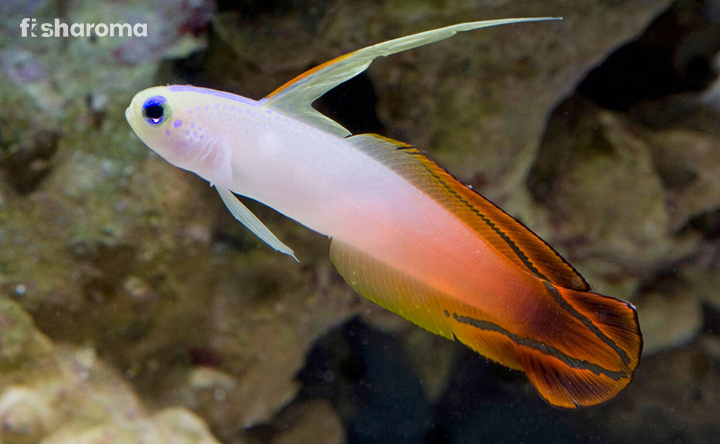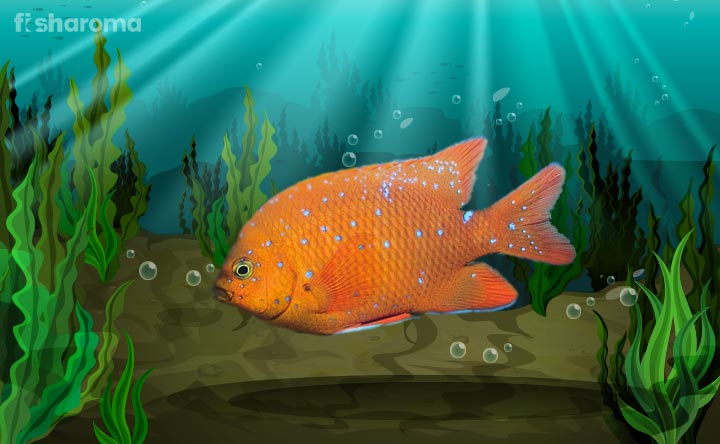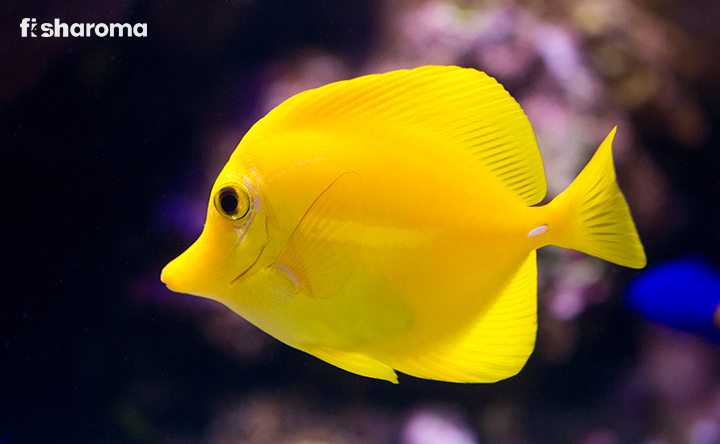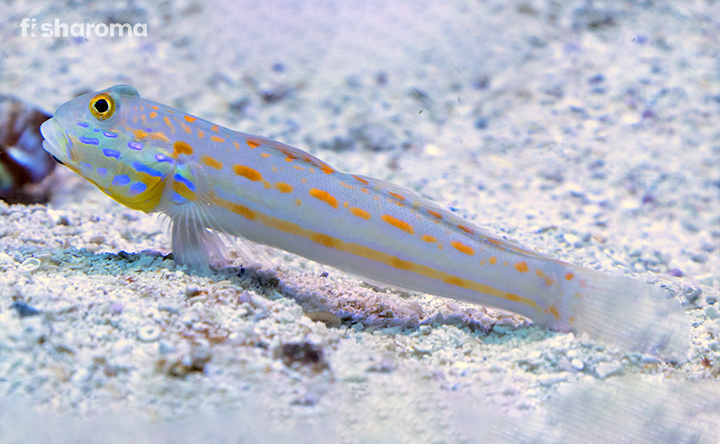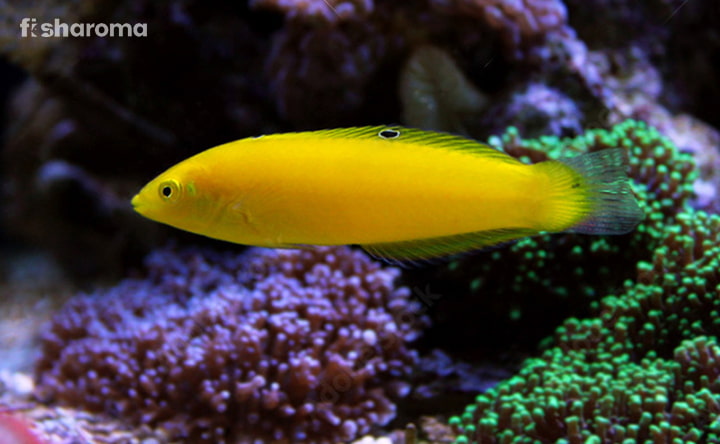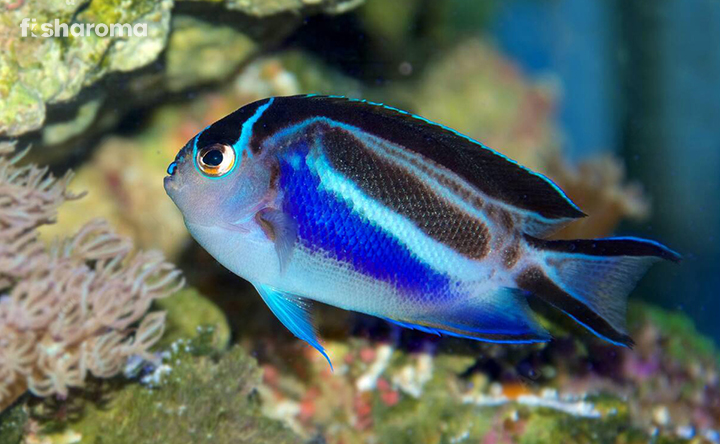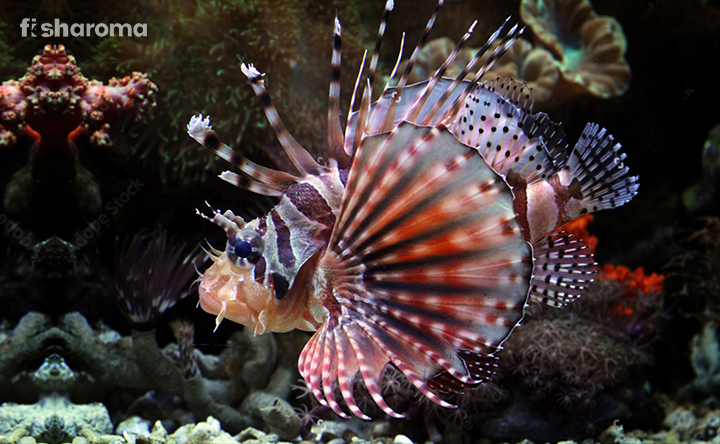Butterflyfish – The Complete Care Guide for the Coral-Picker of Deep Ocean
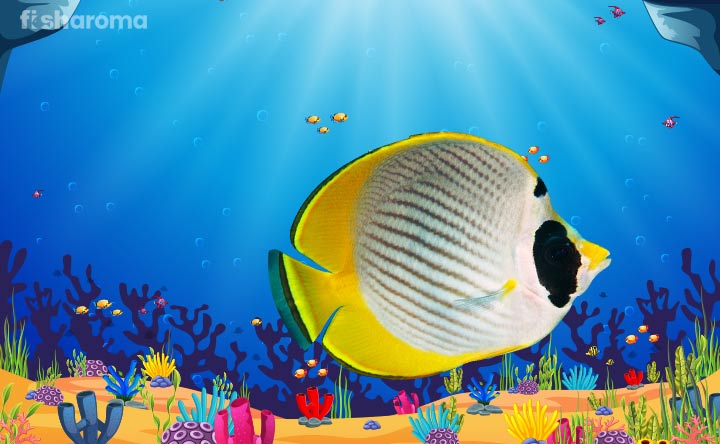
- Origin of Butterflyfish
- Butterflyfish Appearance
- Tank Requirements for Butterflyfish
- Water Type for Butterflyfish
- Temperament Butterflyfish
- Suitable Tankmates of Butterflyfish
- Feeding Necessities of Butterflyfish
- Butterflyfish Breeding Process
- Diseases of Butterflyfish with Interventions
- Types of Butterflyfish
As you might have guessed, Butterflyfish is a saltwater fish that is similar to a butterfly in terms of shape and colors. This species is an exotic fish found in the deep sea which can be kept in your aquarium to embellish its beauty.
The peaceful nature of this colorful fish attracts the fish-breeders to collect the breed in their tank. It is a suitable breed for beginners because of its size and temperament, and only some of its species are notorious and difficult to tackle. But a complete care guide may definitely help fish-keepers to breed Butterflyfish like their loving companion.
Quick Details on Butterflyfish
Its quite natural that you would want to keep this beautiful pet in your fish tank, but before doing that, you need to get a better grasp on its background. Take a look at some of the key specifications of this saltwater fish.:
| Scientific Name | Chaetodontidae |
| Origin | Atlantic Ocean, Indian Ocean, and the Pacific Ocean |
| Life-Span | 5-10 Years |
| Color | Black, Blue, Yellow, White, Red, Orange, Silver |
| Temperament | Usually Peaceful |
| Size | 12-22 cm (4.7-8.7”) |
| Diet | Omnivore |
| Family | Chaetodontidae |
| Compatibility | Compatible with Peaceful Fish |
| Tank Size | 125+ Gallon |
| Care Level | Easy/Moderate or Difficult (Varies for different species) |
Overview
Butterflyfish is the relative of Coral Fish and Bannerfish, found in the tropical and sub-tropical water. Generally, this fish is well known for its good swimming and maneuvering capabilities through coral reefs. Aquarists can find this flat-shaped fish in the shallow lagoons, deep mudflats and seagrass near the coral reefs. However, this fish is really costly and available at $3,800.
Butterflyfish is a diurnal fish that is active during the day and inactive during night. They are always spontaneous in the day and rest on the coral during the night.
Origin of Butterflyfish
Originated in the marine water of Atlantic Ocean, the Indian Ocean and the Pacific Ocean of South American coasts from Massachusetts to Brazil, Butterflyfish is blessed with aesthetic beauty resembling a colorful jewel in the deep bed of marine ecosystem that is surrounded by reef and other inhabitants of sea.
Generally, the small Butterflyfish lives in a group unitedly and the larger species prefer living isolated or swimming with its mating partner at the bottom part of the sea. So, while planning to keep them in an aquarium, bring a proper sized fish tank where this intricately patterned species can live happily in the deep body of the water deep and bottom suggests the same, so don’t mention it twice.
Butterflyfish Appearance
If you talk about its appearance then this beautiful fish is aesthetically shaped same like a butterfly. Moreover, you will get this species in various shades such as yellow, blue, black, white, red, orange and silver for your aquarium.
This 4-8” fish has dark bands around its eyes and round dots on the flanks that can confuse the predators and stop them from attacking Butterflyfish. The uninterrupted dorsal fin of the fish is disk-shaped and flattened. Most of them have elongated noses that allow them to find their food. The gills of this fish are always covered but the gills have small pores that help the species breathe.
The baby butterflyfish develops armored plates that protect them from their enemies when they fight back in defense, but it disappears when they get matured.
Tank Requirements for Butterflyfish
It is recommended by expert aquarists to keep Butterflyfish in the marine water of the live fish tank. As a peaceful species, it prefers living in the caves and hiding places at night because it’s only active and energetic at day. So, try to make a reef surrounding this species.
Tank Size
This 4.7-8.7” fish needs about 70-125+ gallons aquarium because it has a nature of jumping in the tank. Moreover, keep the tank lid tightly attached, so that the fish cannot come out from the tank.
Ornaments
Keep plenty of small rocks, corals, small caves and other hiding places to make your colorful companion happy. Keep corals, shells and other reefs in the bottom of the tank.
Floral Requirement
Delight the Butterflyfish by keeping live water plants in the aquarium because this species is eco-friendly in nature.
Filter
It is necessary to keep a filter in the tank of Butterflyfish so that the pollutants and dirt from the gravels, objects, and water of the aquariums can be easily clean.
Lighting
Butterflyfish is a diurnal fish which is always active in the day. So, it will be better if you keep normal lighting on the ceiling of the aquarium. You can also keep the tank under sunlight for some hours in a day to provide the energy of sunlight and Vitamin D to the fish.
Water Type for Butterflyfish
When you set the water in the tank, just remember without aerated water and proper temperature any fish cannot live long. So, follow some instructions before keeping a batch of water in the aquarium.
Temperature
The marine water in the fish tank should have a temperature between 72-78° F (22-25 ° F).
pH Level
The pH level should be around 8.1-8.4.
Hardness
The carbonate hardness of the water should be 8-12 dKH.
Cleaning Method
If you have a hobby to pet a fish then you have to maintain the hygiene for the health and wellbeing of your cute little Butterflyfish. Try to keep the aquarium clean by replacing the water in a month and cleaning it with mild liquid soap suggested by expert aquarists. Moreover, use a soft brush or sponge to clean the stubborn dirt and fish poops on the wall and corners of the aquarium. After a wash, just wipe it with a soft cloth.
Replacement Process
Replacement of water is not mandatory to be done every week. You can go through this process once a month. However, while replacing the water once in a week, you can replace 10% water and if you do this once in a month then replace about 25% of water but without causing stress to the fish in the tank.
Butterflyfish Temperament
The behavior of this peaceful fish fluctuates with mood because this species is a moody animal. Generally, Butterflyfish stays in a group unless they are territorial. These group of fish has a tendency to find their mating partners and always live with their partners.
Butterflyfish is an outstanding swimmer, and the constant strokes by its pectoral fins allow the species to swim quickly. The small size of this fish helps it hide in crevices and caves to get away from predator fish, and it even fights back while getting attacked by the enemies.
You should keep this fish with its mating partner in a small group and never keep aggressive and large fish in the tanks which can attack or eat Butterflyfish. Try to find out the compatible friends for this beautiful fish.
Suitable Tankmates of Butterflyfish
Butterflyfish is comfortable with its own family or community and always prefers staying with its mating partner. You can keep the following companions for Butterflyfish in the tank such as:
- Gobies
- Damselfish
- Clownfish
- Hogfish
- Tangs
- Parrotfish
Avoid keeping aggressive water species with Butterflyfish because it may create a problem for your colorful buddy since it would result in violence, fighting, and bloodshed.
Feeding Necessities of Butterflyfish
Butterflyfish is an omnivorous species that eats both meat and herbs. The long-pointed nose of Butterflyfish helps it adaptable in crevice feeding. The bristle-like teeth that are arranged in the narrow band of jaws help Butterflyfish nip and scrap its prey or food. The vegetarian diet of this fish includes:
- Algae
- Plant leaves
Among live foods, this fish feed on the following:
- Live Coral
- Polychaeta Worms
- Georgians
- Zoantharian
- Tunicates
- Invertebrates
- Sponges
- Planktonic Animals
- Crustaceans
- Brine Shrimp
- Crab
- Zooplankton
- Amphipods
- Seaweed
You can also feed them frozen food and flakes easily available in the market such as:
- Tetra Pro Energy Tropical Fish Food
- Wardley Tropical Fish Flake Food
- Fluval Bug Bites Granules
Try to feed them twice a day for their healthy lifestyle because overfeeding may result in their health issues. Overfeeding can really harm them with health problem like Dropsy (swelling stomach).
Butterflyfish Breeding Process
The male and female Butterflyfish start finding their mate and pairing at a very early age. This saltwater fish can mate for a long time. Also, their compatibility and affection are very strong than other sea fish. The spawning of the fish takes place in a hiding place in the dark because it’s a shy fish. The female can lay 3000 to 4000 eggs at night, and the eggs hatch within one day. The fertilization and development process of this fish takes place in two days and grows very fast.
You just need to keep them in a large tank during the reproduction process and allow the parents to live with the eggs after they hatch the eggs. You don’t need to separate the eggs from their parents and keep them at another tank.
Diseases of Butterflyfish with Interventions
Butterflyfish are usually affected by the vulnerable parasite and fungal infections because it eats parasites. This fish is also known as a tank cleaner because it consumes algae in the aquarium. They are also affected by several diseases such as:
- Nitrate Poisoning – This infection is caused by dirt and dead fish in the aquarium that gets accumulated when the tank is not cleaned. The fish loses its appetite, lose its mind equilibrium and also face problem in breathing. So, try to keep the tank clean with mild liquid twice a week and keep well-aerated clean water in the tank to avoid this poisoning.
- Dropsy – This is a severe painful swelling around the scales and stomach of Butterflyfish. Usually, the overuse of salt in the water, improper diet, internal tumors, inner-injuries, and poor water condition may result in this severe health issue. Therefore, clean the tank, maintain the diet and take suggestions from the veterinary doctor to cure the small fish of this life-threatening disease.
Types of Butterflyfish
There are different types of Butterflyfish that fall in the category of Chaetodontidae family that are available in different sizes and shades such as:
- Copperband Butterflyfish – This yellow-orange vertical fish with a long narrow nose and black outlines look gorgeous in a fish tank. It has a false eyespot on the dorsal fin. Moreover, Copperband Butterflyfish is a peaceful breed and very sensitive. So, you need to apply different foods to this fish for its good health.
- Auriga Butterflyfish – Also known as Threadfin Butterflyfish, this fish has a peaceful temperament too and is generally shy in nature. This species prefers to live in the rock and reef tank and likes to consume Mysis shrimps, crustaceans, and small fish.
- Falcula Butterflyfish – You will find this aggressive fish in the deepwater of the ocean and its white body with yellow dorsal fin makes it a rare combination. This fish has a black band over the eye with orange coloration at the posterior.
- Klein’s Butterflyfish – This hardy and peaceful species is the best breed for beginners. You will get various shades of this species such as golden-yellow with blue eye band, black, orange and brown. They are carnivorous by nature and prefer eating meaty foods like shrimp, fish, frozen marine insects and crustaceans.
- Fourspot Butterflyfish – Fourspot Butterflyfish have two white spots and a black dorsal fin on the sides. This peaceful fish is moderate to take care of and it’s a good jumper, but they don’t like to be captivated. If they really get captivated then special care, food and ambiance are the priority for this fish.
- Lemon Butterfly Fish – This lemon-yellow Butterflyfish has dark spots and vertical stripes on its body and black lines on its yellowfins and around its eyes. Feeding proper foods to this fish is very necessary because a wrong diet may fade the colors of its body.
- Pearlscale Butterflyfish – The pearl-white fish has striking reticulated black patterns on its body and the fins of this fish are orange, highlighted with yellow. Moreover, there is a dark oval spot behind the eye-band of this fish. You may see it growing up to 6” and this fish always love eating meaty foods and fresh herbs but you can also feed them frozen flakes.
- Lined Butterflyfish – This fish also has a white body with black vertical lines, even on the dorsal fins. You will also find a black band at the base of its tail and anal fins that are yellow. These are very sensitive species that are delicate and thin but some are aggressive and recommended to be taken care of by the expert fish-keepers.
- Pebbled Butterflyfish – This creamy-white fish has six tan-lines on the entire body that runs vertically. Also, it has a black band at the tail fin with a horizontal pattern. Avoid keeping the same members with it in the fish tank because they are aggressive and can start fighting at any time.
- Raccoon Butterflyfish – The upper-half body part of the fish is shaded with yellow and orange hues, and there is a black patch around the eyes with thick stripes. This fish is not suitable for a reef tank because it doesn’t like much variants where it dwells.
- Pyramid Butterflyfish – The other name of this fish is Yellow Zoster Butterflyfish that is peaceful in nature. But it prefers living isolated or just with two to three companions. So, do not make the tank crowded by keeping much species in the water.
- Saddleback Butterflyfish – The large black Saddleback Butterflyfish is surrounded by a white border on the upper portion and on the dorsal fin. The lower-half body part of the fish is orange in color with a black tail. You will also find grey-blue stripes on the lower body of some fish. They are semi-aggressive and carnivorous.
- Tinkers Butterflyfish –This fish has black dots on each scale of anterior half and the tail and fins are orange in color. This species grows up to 5-6” (12-13 cm). You will find this fish in the deep water at a moderate temperature and its diet consist of both meaty substances and vegetables.
- Teardrop Butterflyfish – This fish is also known as coral picker because it lives in the wild and prefers eating corals. Moreover, this fish also loves eating algae and other herbs, and it grows long. Try to keep this species in a spacious tank because this fish is small in size but has a habit of jumping.
- Yellow Longnose Butterflyfish – The head of this yellow-shaded fish is divided horizontally. The top portion of this fish is black and the bottom portion is white. The care level of this aggressive fish is moderate because if you learn the proper ways then you can definitely take better care for this species.
Challenges in Keeping Butterflyfish
Keeping Butterflyfish in a tank is not much challenging because this fish is peaceful and small that helps the fish-keepers to take care of this fish easily. However, some of the fish are stubborn and they are hard to tackle, so follow the aforesaid guidelines properly to take care of the fish.
Care Guide of Butterflyfish
These species are hardy and their care level is not so difficult but varies with several fish. They don’t prefer living in captivity because they prefer a natural environment. So, while keeping them in an aquarium, try to provide them a natural environment and feed them according to their diet plan with the necessary nutrition.
Wrong habitation and foods may harm them and incorrect tankmates may trouble and stress them. Remember, stress is one of the primary sources of color fading and health issues, so try to keep your little friends happy by providing proper care.
Interesting Facts on Butterflyfish
- The scientific name of Butterflyfish and the word ‘Chaetodontidae’ is the combination of the ancient Greek words’ “tooth” and “hair”.
- Some Butterflyfish are corallivores and just eat coral polyps, therefore they are known as coral-pickers.
- This fish makes a different sound to call their tankmates.
- The fake eyespot near the tail of the fish can confuse the tankmates and predators.
- Butterflyfish is an iconic fish in Japan.
Acquire Information on More Colorful Fish for Your Aquarium
Just like the beautiful Butterflyfish, you can also keep other bright and beautiful fish in your aquarium to bring a bright and appealing look. You may know about more fish that can be your eye-candy such as:
- Royal Gramma: This Caribbean multi-colored fish is cute and beautiful and beginners prefer keeping it because of its color and looks.
- Colorful Fish for Your Aquarium: There are different colorful fish breeds that can flourish the beauty of your fish tank and you may collect information about them.


